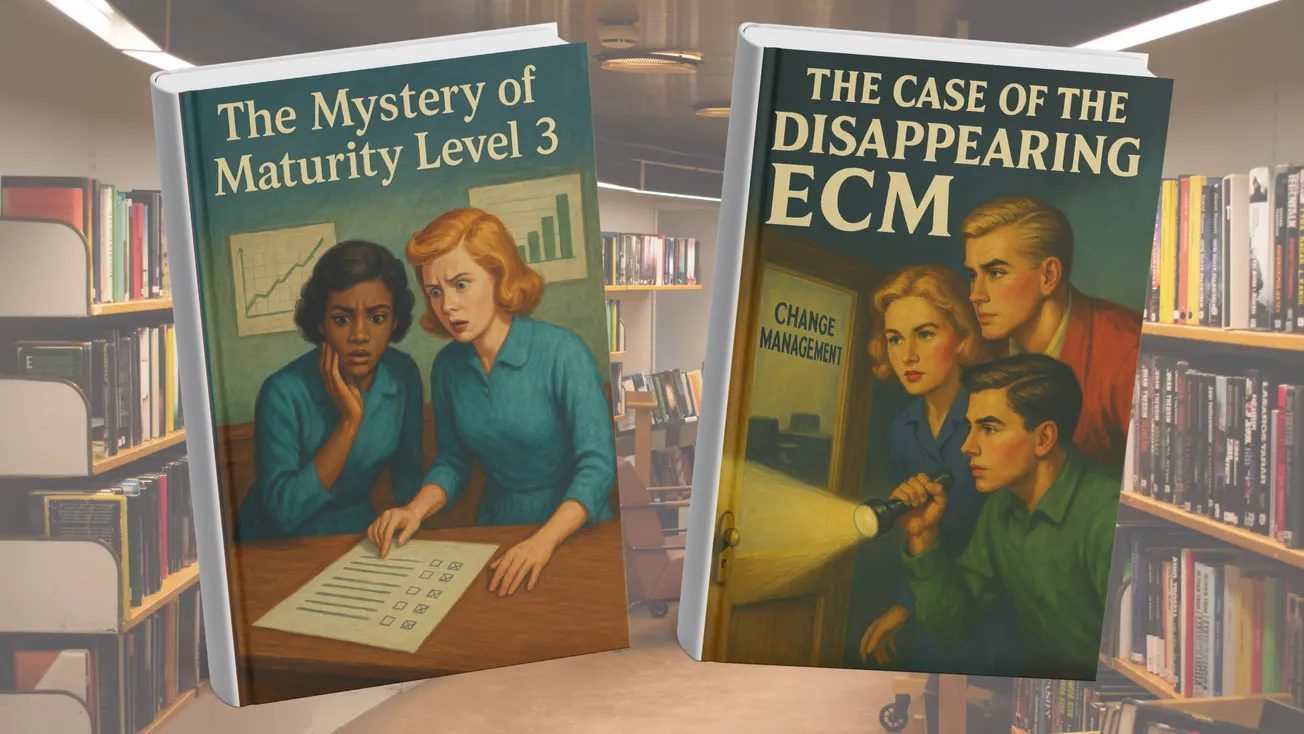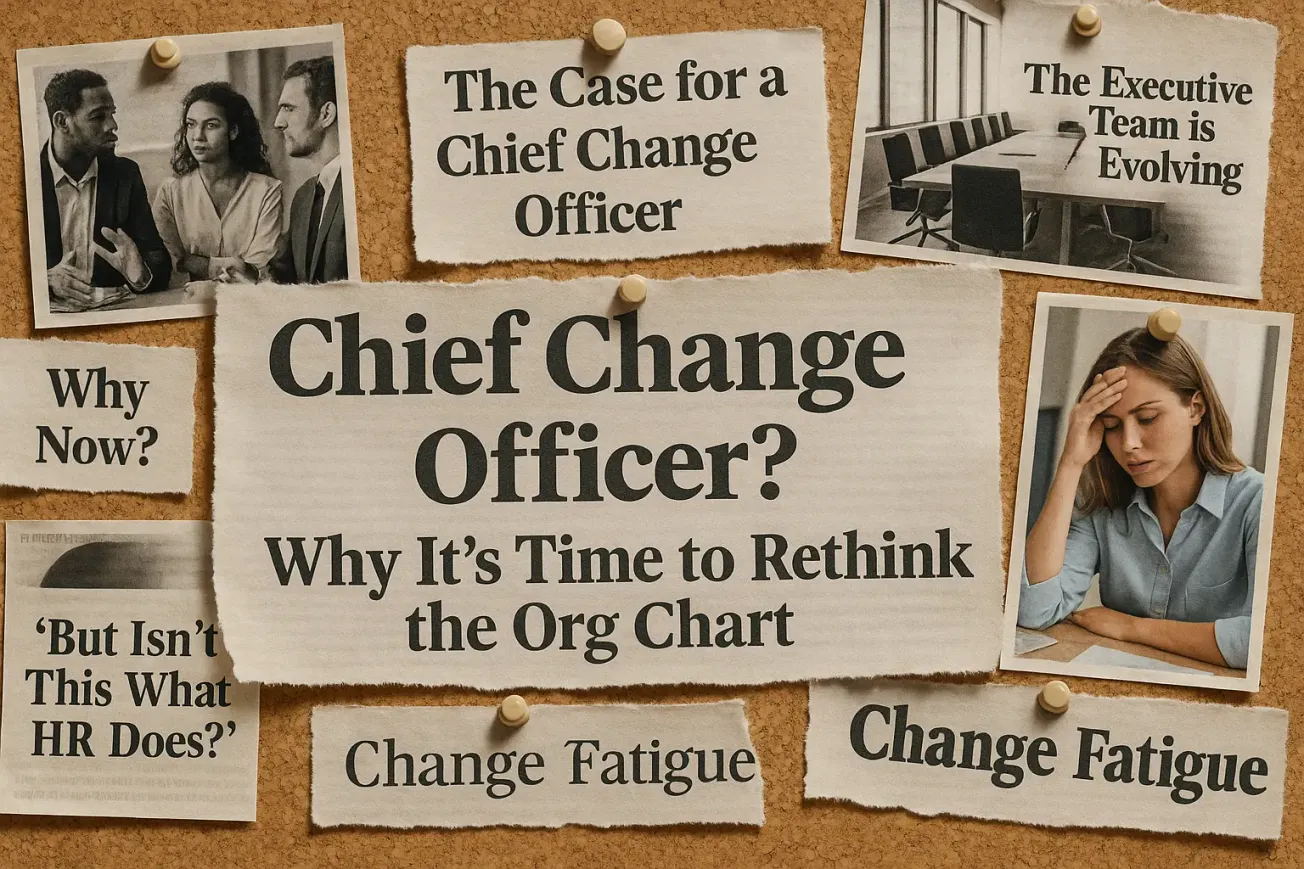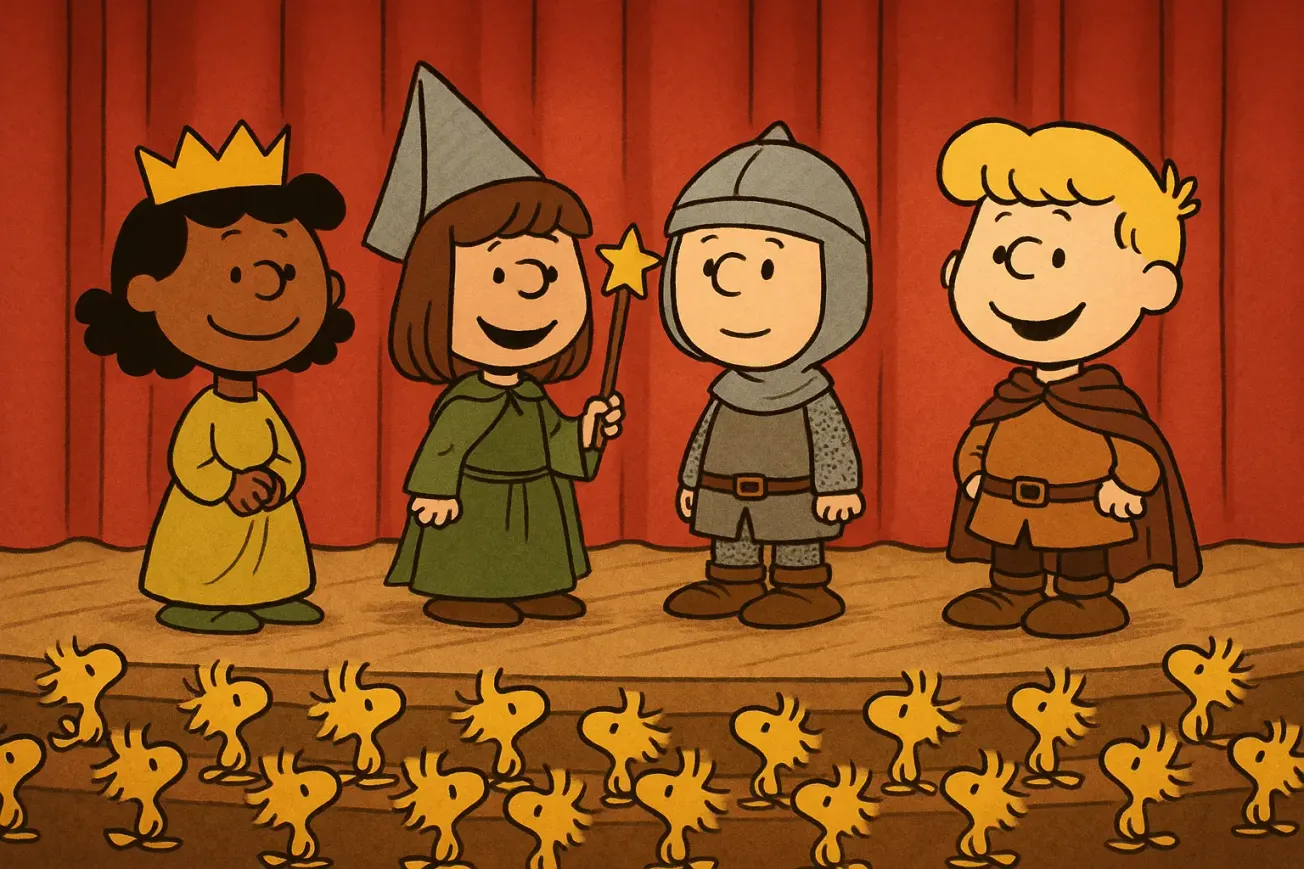Why CM functions vanish—and what seasoned practitioners do about it
The Pattern You Learn to Expect
I’ve been part of five different change teams at the same company.
One was official.
One lived inside HR.
One reported to IT.
One flew under the radar.
One was, quite literally, a covert skunkworks team without a name.
All of them had the same arc: about 18 months in, they’d get reorganized, dismantled, or quietly buried.
In one case, a new CIO came in and flattened the org, dropping change entirely. In another, a shared services redesign inside HR "optimized" the team into oblivion. And still, the work never went away—only the headcount did.
This is a pattern I’ve seen repeatedly over decades, across roles and companies. And it’s one I believe change practitioners must talk about more openly.
The Vanishing Act of Change Teams
Enterprise Change Management (ECM) functions often disappear—not because they’ve failed, but because they’re misunderstood.
The pattern usually looks like this:
- A team is stood up to “drive change.”
- It’s tucked inside HR, IT, or the PMO.
- It lasts just long enough to build a few frameworks or train some leaders.
- Then a reorg comes. A new CIO. A new CHRO. A budget review.
- Suddenly, the team is gone.
In theory, the function is “absorbed.” In reality, it’s erased.
Here’s what drives the cycle:
- Leadership churn. New execs want their own org design.
- Cost-center optics. CM rarely owns metrics; it influences them.
- Diffuse ownership. Everyone wants change. No one wants to sponsor it long-term. And no one wants to pay for it.
- Shared service fatigue. HR and IT often can't shield CM functions during reorganizations.
But here’s the rub: the need for change management never goes away. When the function disappears, the work doesn’t stop—it just becomes invisible.
How I Know This Cycle (All Too Well)
I’ve lived this pattern in just about every seat at the table:
- As a practitioner on change teams that got reorg’d out of existence.
- As a discipline lead responsible for justifying my team’s continued existence to shifting leadership.
- As a consulting firm owner, deploying teams to clients and coaching both the consultants and the clients on building something that lasts.
- As an Account Executive, selling ECM services and watching functions rise—and get absorbed or defunded.
- As a coach, supporting discipline leads trying to scale their impact inside political and structural headwinds.
Every time, the same questions surfaced:
How do we prove the value fast enough?
How do we protect the team without isolating it?
How do we keep the work alive, even if the structure dies?
The Path Forward Isn’t Structural—It’s Strategic
Here’s what I’ve learned:
Stop anchoring your identity to the department. Anchor it to the work. Whether it’s called “Org Readiness,” “Change Enablement,” or something you made up just to keep going, it’s still the same discipline.
Build informal coalitions. Teams may disappear, but networks endure. A distributed model of embedded allies often survives better than a centralized one.
Document obsessively. Your current team may not survive the fiscal year, but the next one can find your playbooks if you leave breadcrumbs.
Normalize reboots. ECM doesn’t fail—it gets recycled. Plan for this. Bake it into your strategy.
Frame ECM as a design principle, not a team. A team can be cut. A way of working is harder to kill.
Real Talk
You’re not crazy. You’re not bad at your job. And you’re definitely not alone.
The “18-month shelf life” of change teams isn’t a sign of dysfunction—it’s a feature of how most organizations still misunderstand the role of change.
I’ve helped teams build it. I've watched execs dissolve it. I've sold it, scaled it, and rebooted it—more times than I can count. The lesson that sticks? Change management survives when it becomes part of the business rhythm, not just part of the org chart.
If you’re quietly doing the work under a new title…
If you’re rebuilding a playbook you built three orgs ago…
If you’re mentoring the next CM lead, knowing they’ll face the same uphill battle…
You’re in good company.
Final Thought
Enterprise Change Management isn’t dead.
But it’s no longer safe in the hands of hierarchy alone.
If you're lucky enough to have a formal team—build fast, embed deeply, and leave behind tools, allies, and a mindset that survives the next reorg. If you're running solo, you're not failing—you're playing the long game.
The function may disappear. The need never will.
ChangeGuild: Power to the Practitioner™
Recommended Reads
If you enjoyed this article, you might also find these helpful:



I’ve seen change teams come and go—but the work always finds its way back.
If you're balancing the urgent needs of today with the messy, uncertain shape of what's next, I can help you build for both. Whether you're leading a team, flying solo, or rebuilding (again), you're not alone.
Book a coaching call to design change work that meets the moment—and leaves something lasting behind.
This post is free, and if it supported your work, feel free to support mine. Every bit helps keep the ideas flowing—and the practitioners powered. [Support the Work]











